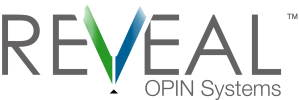My wife and I first moved to Indiana in early spring, one of the most beautiful seasons in the Hoosier State. After a few weeks of cold and rain, our neighborhood was awash in the rich greens of lush grass and the flowering fruit trees that populate the state. It was a gorgeous re-entry to the Midwest for our family.
 As beautiful as it was, we could not have foreseen what was to follow – a crippling drought. By July our lawn was almost completely burned out, and the “crunch, crunch” of walking on it made it clear that something had to be done.
As beautiful as it was, we could not have foreseen what was to follow – a crippling drought. By July our lawn was almost completely burned out, and the “crunch, crunch” of walking on it made it clear that something had to be done.
It wasn’t rocket science.
The local water company was gracious enough to provide water…directly to my house! All I had to do was gather up my hose, my sprinkler, and my checkbook, and all the life-giving resources that would save my lawn would be available to me.
Well…that’s not entirely true.
The truth is, water, the life-giving resource, was only available if I actually hooked up my hose and sprinkler, and delivered the water to my dying grass. Gathering all the materials is not delivering the goods, and this is where story comes in.
We have all sat through presentations that were accurate, detailed and pertinent…and 15 minutes later we forgot every word. Why? Because the presenter had gathered his hose and sprinkler, but didn’t connect them to the water source! The point of the presentation was not to be accurate, detailed and pertinent, the point was to connect with the audience on a visceral level to inspire, influence and catalyze change.
Stories drive home the point
In the IT world, we are always trying to influence. We want our bosses to give us more budget, we want our users to adopt our processes, we want our customers to understand the value we bring…the list goes on. What will separate your message from the thousands of other messages your audience hears is story. A good story can make a mundane point memorable, and a powerful point life-changing!
A few years ago I worked with a group of colleagues to put together an innovative, interactive database that we firmly believed would change the way our company did business. We were convinced that it would steamline processes, consolidate workflow, and make transparent information that had been hidden for years. The problem?
For most of the human race, there is nothing sexy about a database!
Sure, we weren’t the sharpest knives in the drawer, but we did understand that we needed to come up with a better way to sell it to our bosses and our user community. The solution? First, we created user personas as a way to put a face on our target audience. Then, one of our guys created three fictional user stories that outlined what the product would eventually do. (We made sure the audience knew they were fictional stories.) The stories included:
- Casting vision for how the product would make life easier for users
- Clear use cases that were universal in their appeal
- Connection between the stories and the stated organizational goals
- Appealing anecdotes that actually tugged at some heartstrings
- Most importantly, elements where people could insert themselves into the story
Some of you may be reading this and saying, “Yes…but the FACTS, FACTS, FACTS!” And I agree. Telling stories without the backdrop of a solid foundation built on data would be pointless. That being said, making your presentation powerful and memorable by telling stories is what will connect the hose to the water source for your audience. And that will give you the influence you need to reach your goals!
***
